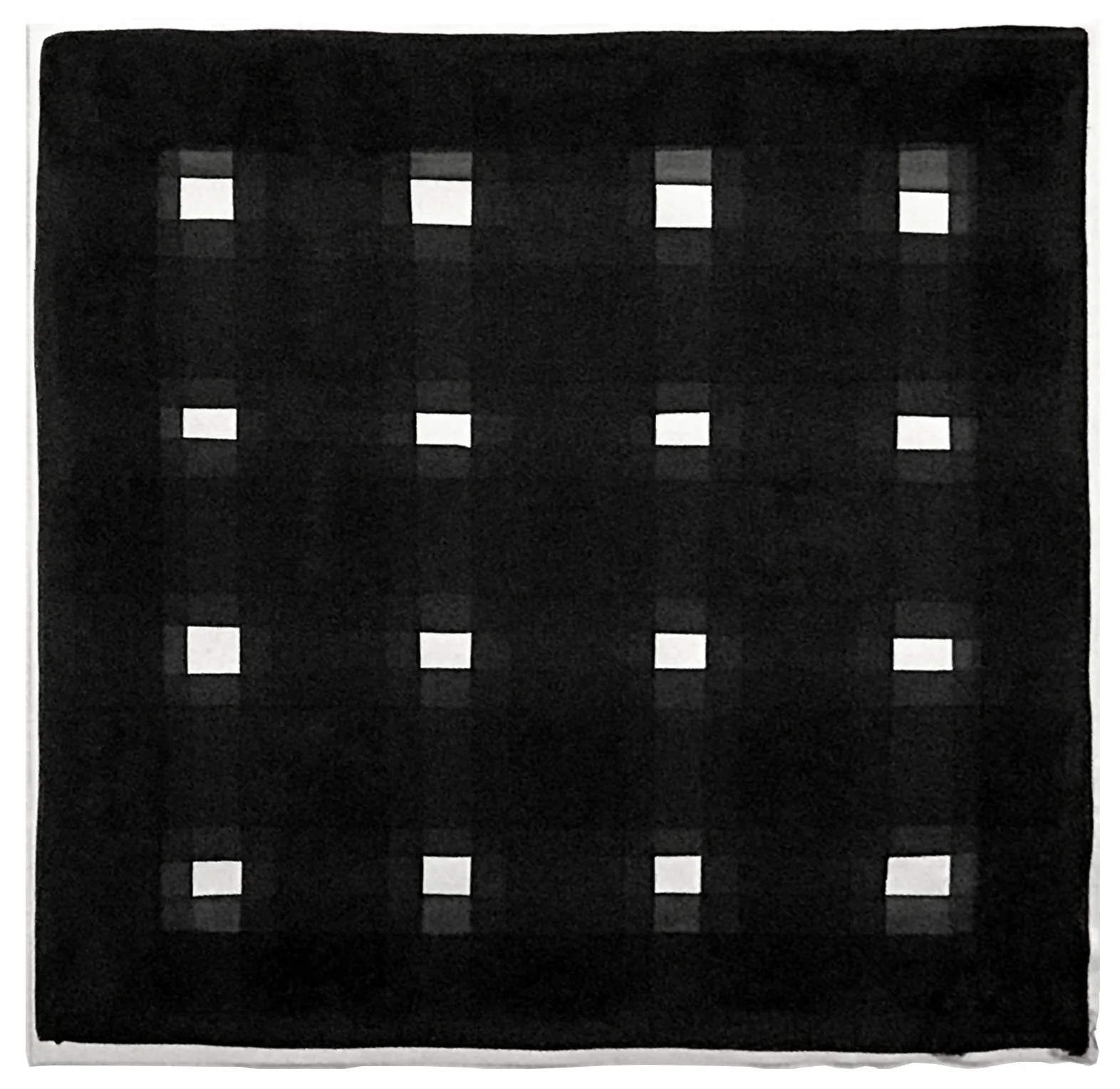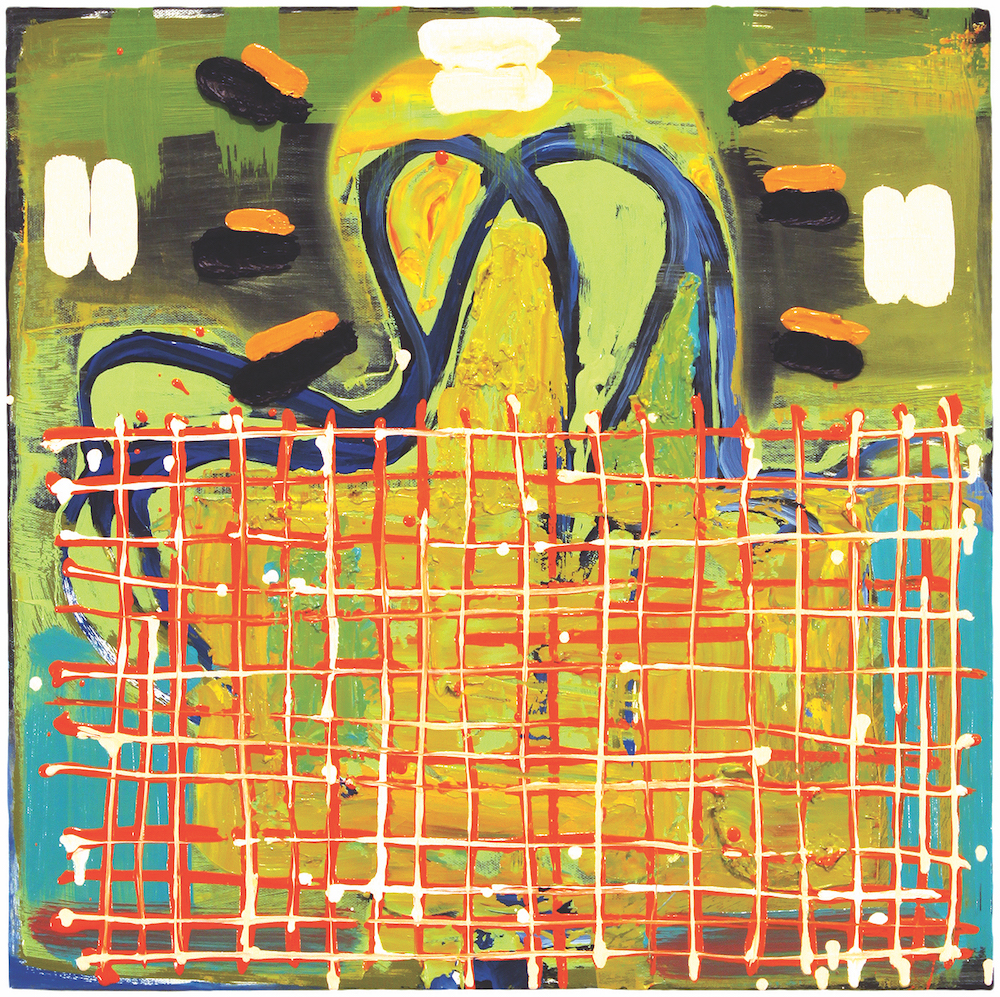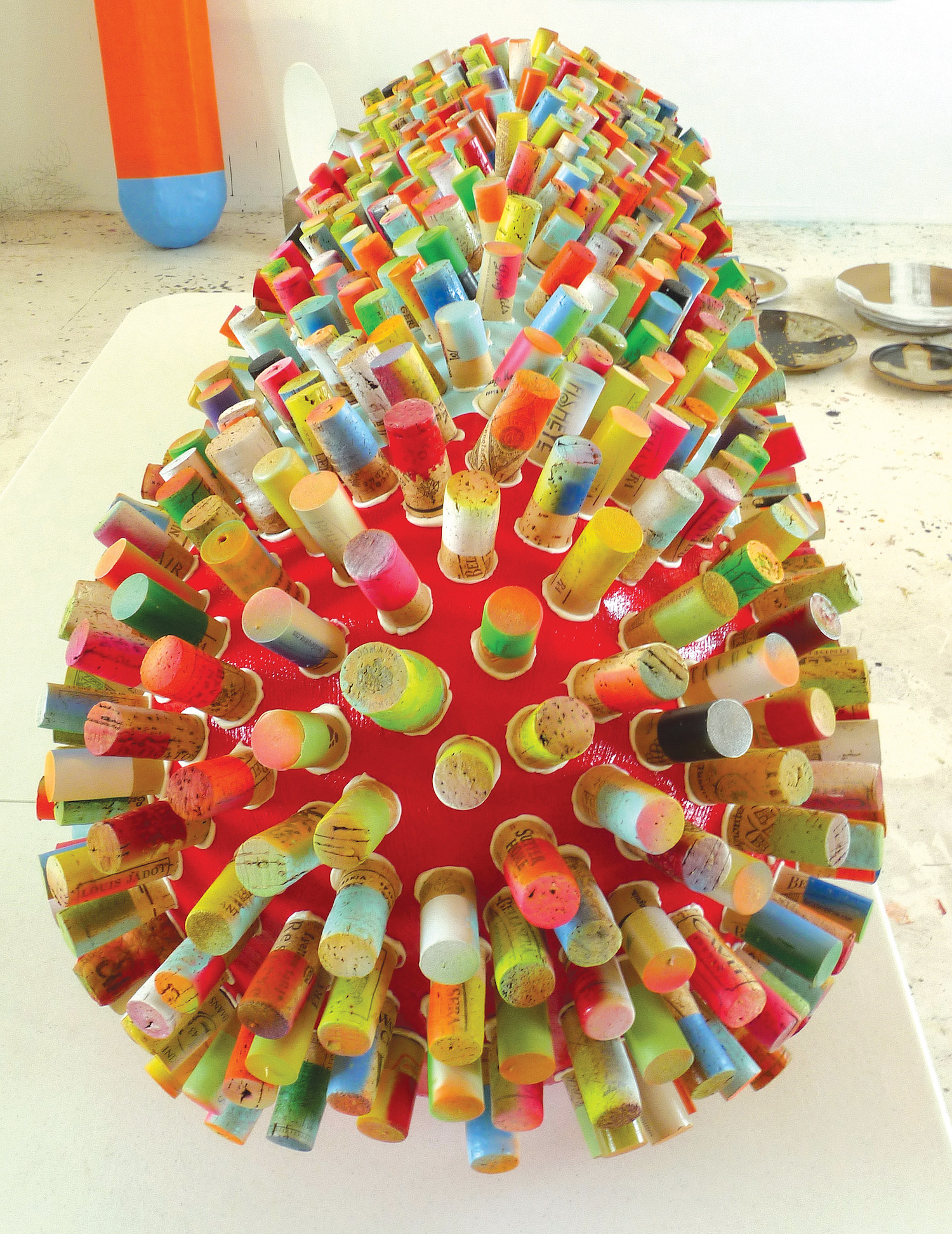AMoCA Collection | Heaven #26, ink on paper, 28.5"x29.5", 2010
RAIR | 2010-11
Heidi Pollard | Albuquerque, NM
Heidi Pollard has exhibited her work in New York City at PS 122, McKenzie Fine Arts, Janet Kurnetowski Gallery and Horse Trader Projects; other venues nationally include a 2011 solo show at Warschaw Gallery, Los Angeles. She has attended numerous residencies including the Headlands, CA and the CUE Art Foundation, NY. She is a recipient of grants from the Pollock-Krasner Foundation and the New Jersey State Council on the Arts. Her work has been reviewed in Art NewEngland, and featured in New American Paintings, as well as on Newsweek Online, in Peter Plagens’ essay and slideshow, Kandinsky’s Heirs.
Roswell Museum and Art Center
Rair exhibition • Heidi Pollard "Good Night" • July 29 - September 11, 2011
What If an Hourglass Swallowed an Orchid?
What if an hourglass swallowed an orchid? Heidi Pollard’s paintings offer no such direct imagery, and yet this is the kind of question the viewer will ask when confronted with the intense vulnerability of “Heart”. As if we know that loss is impending, as if we know joy is presumptuous, and beauty temporal. Pollard, who acknowledges that her recent work has been “infected” by the vitality of Phillip Guston’s late and almost comic work, doesn’t create anything overwhelmingly representational. Yet, the movement of color and form nothetheless challenges the subconscious mind of the viewer to spar with story. One to two word titles may give us a toehold, but it is line and hue that tether us to memory. One glance and the game is afoot. Call it cribbage with duality [”Score”]. Call it embracing a checkered past [”Game”]. Narrative is both encouraged and thwarted by the strata of paint, the interplay of form and color, texture and tone. Rival emothions vie for our attention. And our minds wrap small illogical narratives around simple guidelines: a child’s pacifier is topped with a severed head [”Buffet”]; teatime is inverted and a plate thrown to the ceiling [”Awful Pudding”]; a backyard fort harbors a jellyfish under the green lawn [”Fort”]; three fingers grow from a pharmaceutical pill [”Finger Ship”]; pears top the travesty [”Double Crossing”]; a car battery is teething [”House”]; a pulsating glob under wire mesh resembles the Virgin - or Buddha - with stethoscope [”EKG”]; fingerprints of a possessed poet remain long after the typing is completed [”Bitter Lake Ghosts”]. A spirit of play imbues all looking, as literal understanding may be moot; interpretations will certainly be as varied as viewers. Nonetheless, meaning is derived. Each intuited narrative begs us to feel what we feel. And what we feel is not easy to define. Pollard’s art achieves something akin to negative capability, the phrase used by the poet John Keats to describe the ability to exist “...in uncertainties, Mysteries, doubts, without any irritable reaching after fact & reason[.]” While the work stands confident, we stand in front of it and cling to wire mesh. We cling to grids. To oblongs, swirl, and arc. To points of intersection otherwise known as crosses. We cling to the way paint is forever seeking its level. And then we let go: we laugh; we ache; we hear color. Forms recur and shape-shift and we are altered as our bodies enter the converstaion of perception. For the viewer, resolution takes time. And time is merited. Time hones the ability to abide a variety of forces and impulses at once. This is better than reconciliation; Pollard’s art proposes a deep integration of often opposing states of consciousness. You might say that Pollard offers a divine toggle switch.The mind of the viewer oscillates between the paint scraped away and the paint remaining in “Goodnight”, and between what is obscured and what is doing the obscuring in “Imperial Numerals.” Then somewhere between past and present, comedy and despair, hidden and revealed, we reach a fever pitch of vibration where either and or merge, and we achieve a comprehension that transcends language. We achieve recognitionAnd this is where we learn about ourselves, about life, about allowing the world to be beautiful and awkward, devastating and playful, fully complex. The invitation spoken by Heidi Pollard’s art is simple: be engaged. And how can you not? How can you not caterwaul with green bean and its shadow [”Head”]?
Lisa Gill, poet
May 11, 2011
Albuquerque, New Mexico






